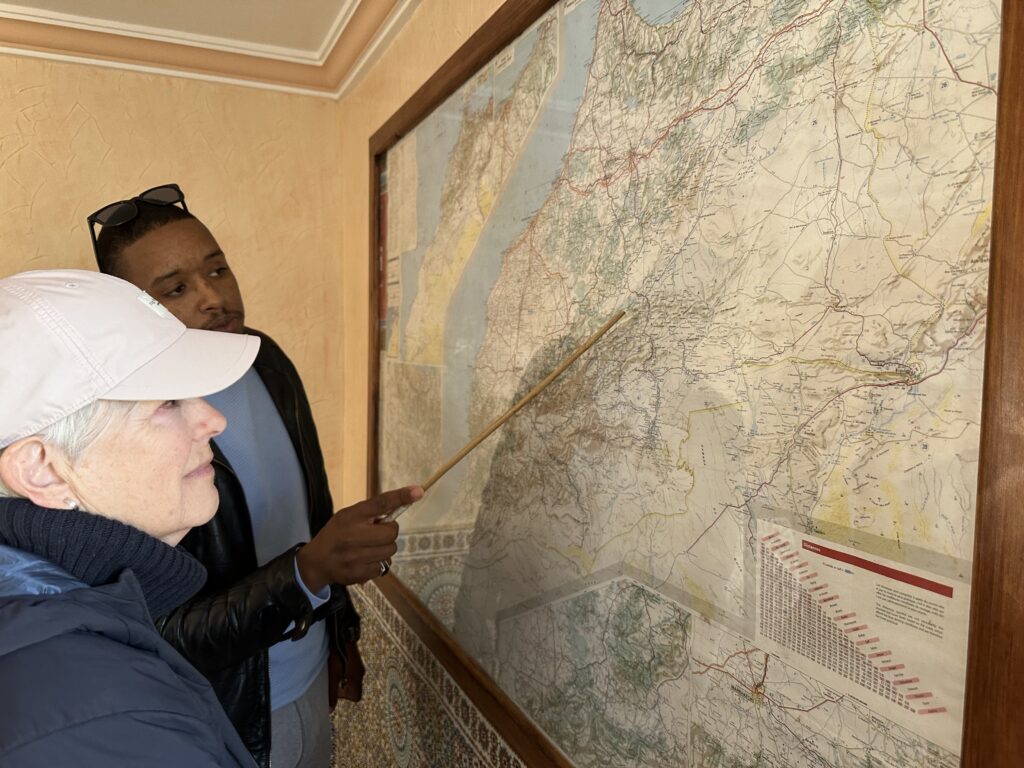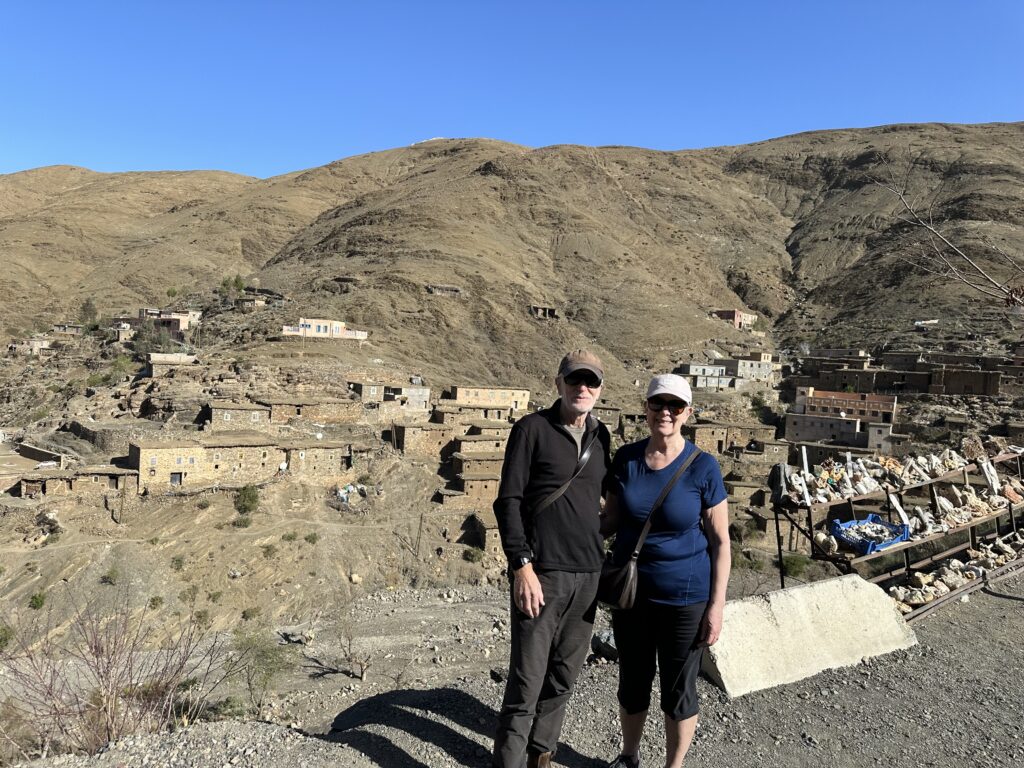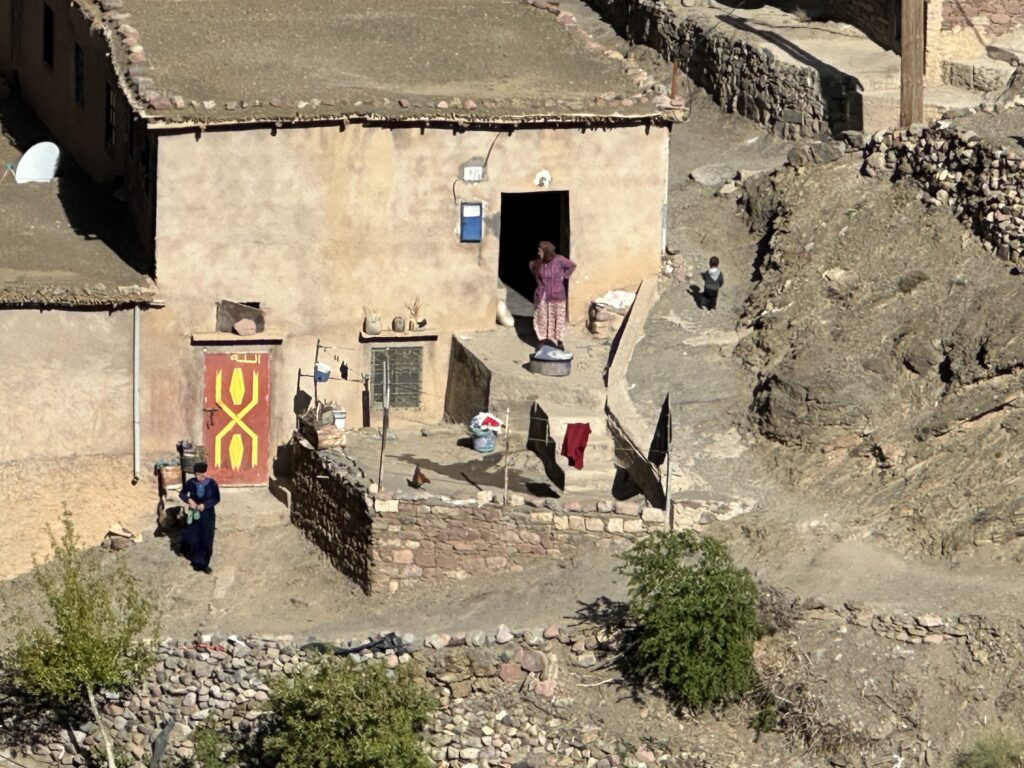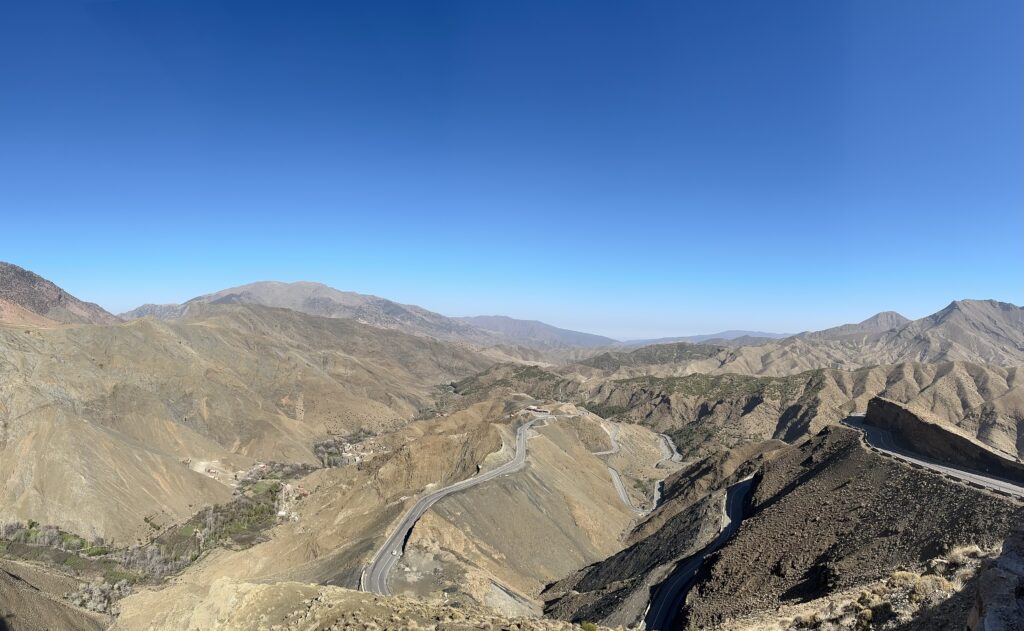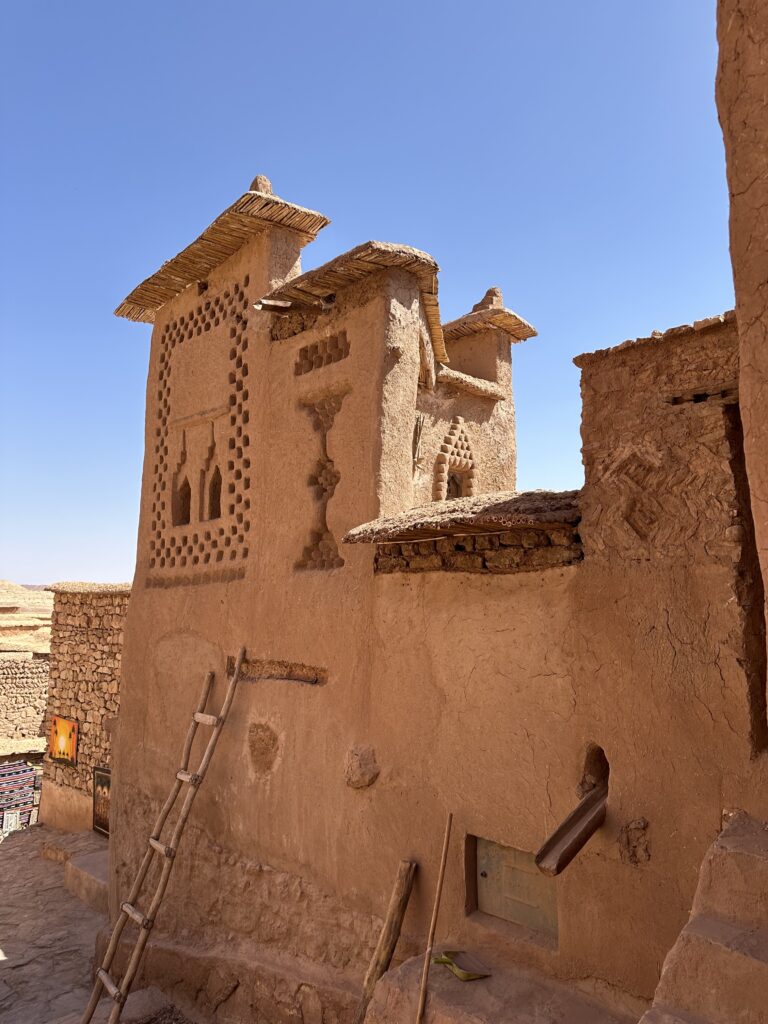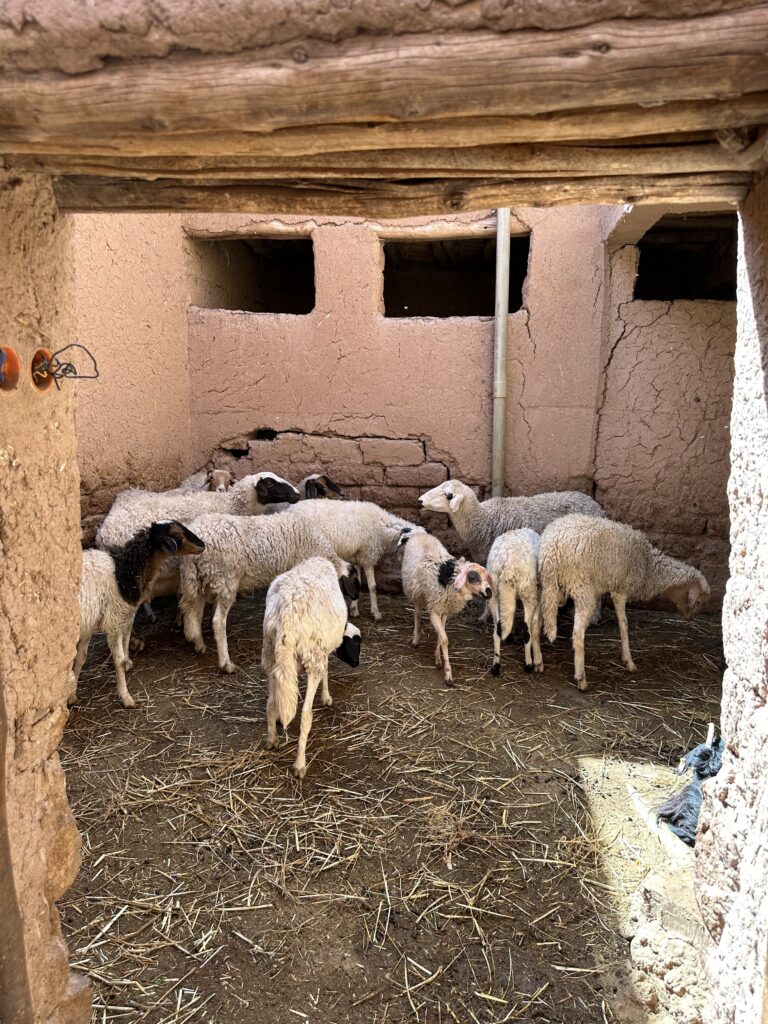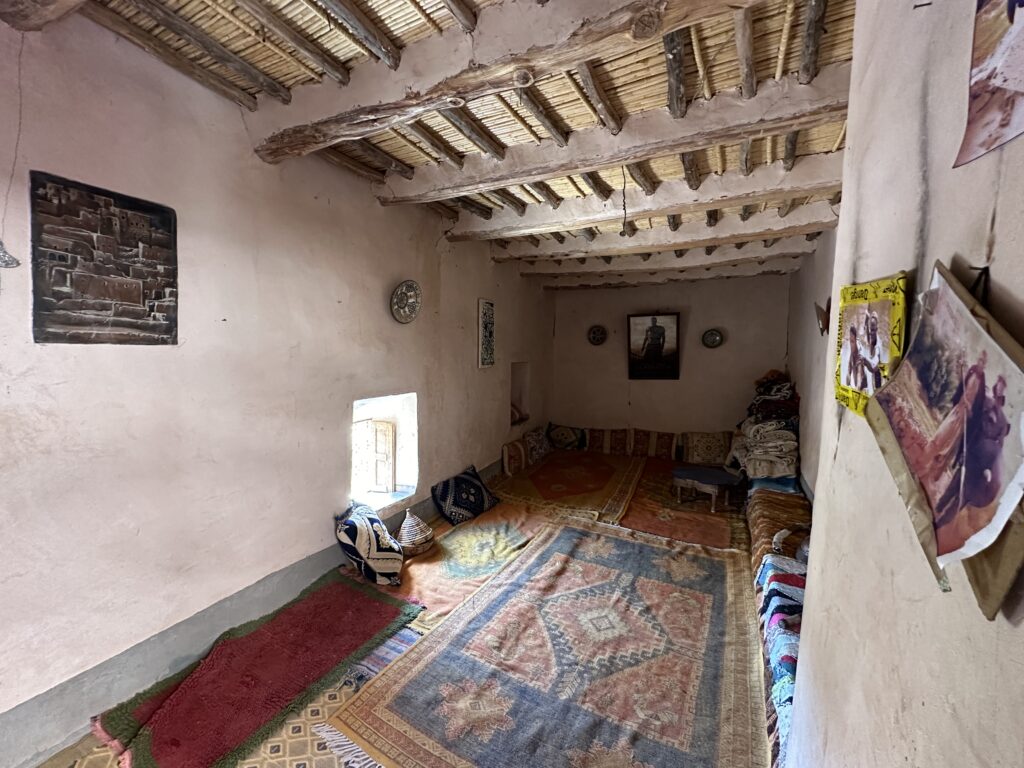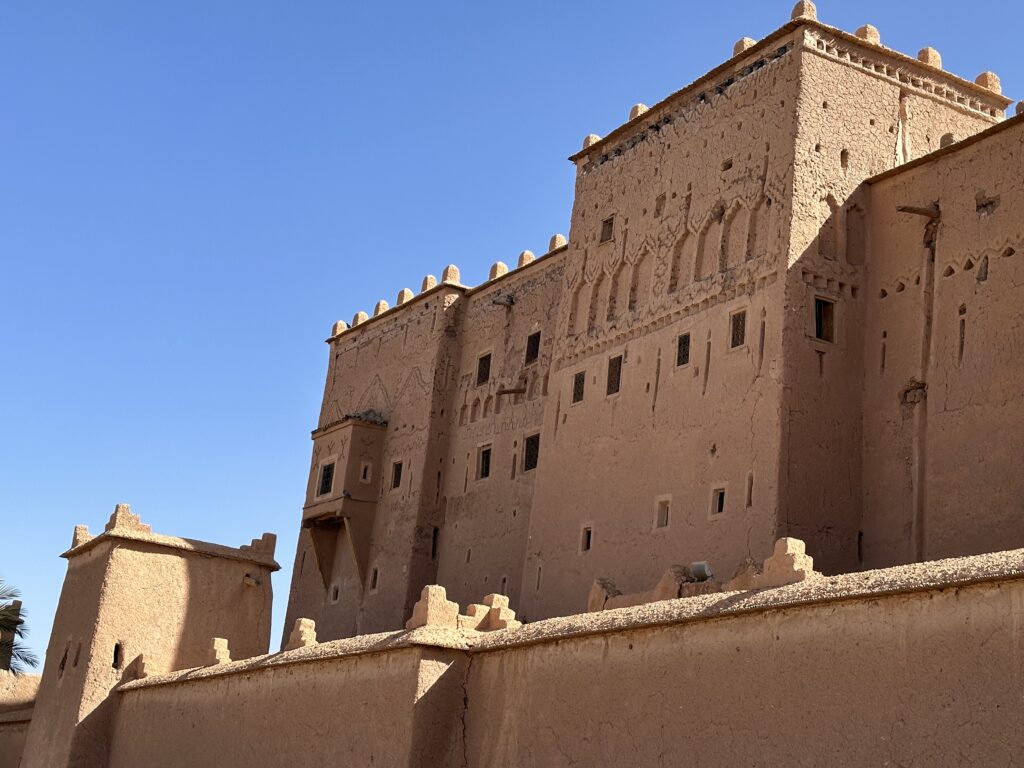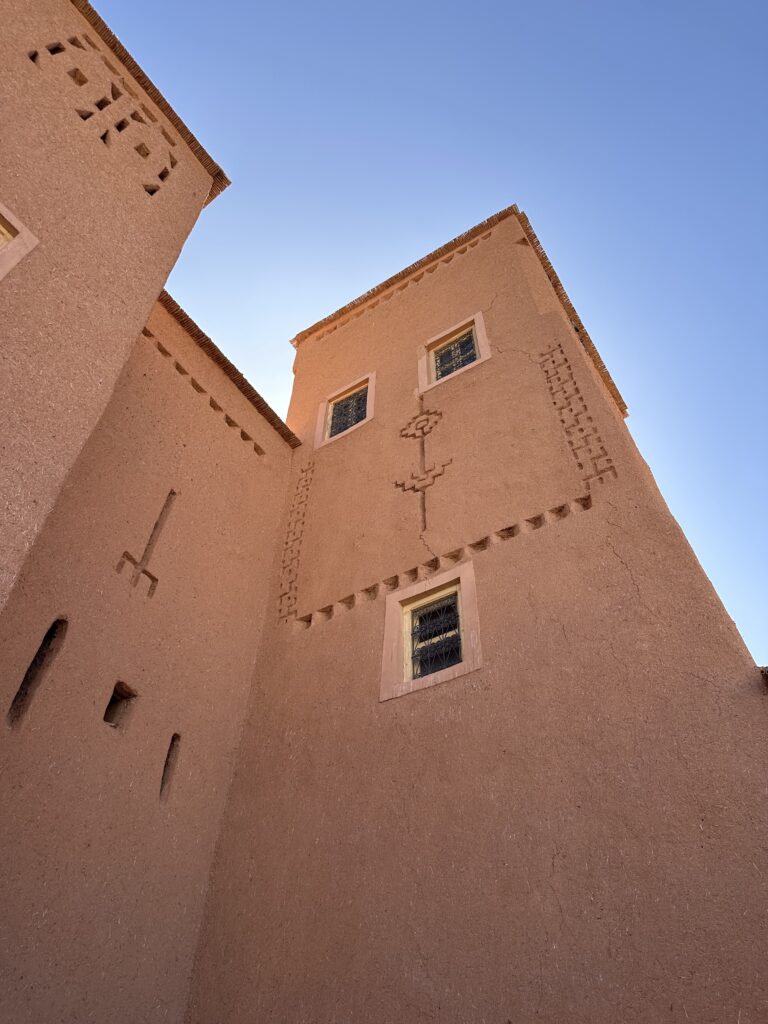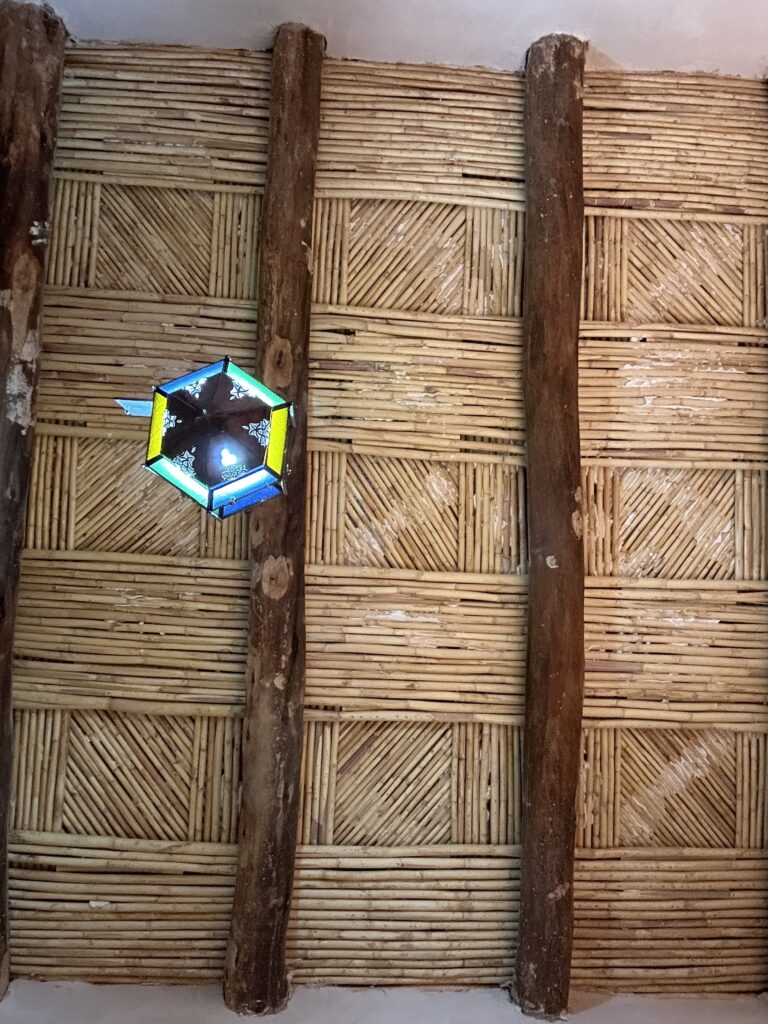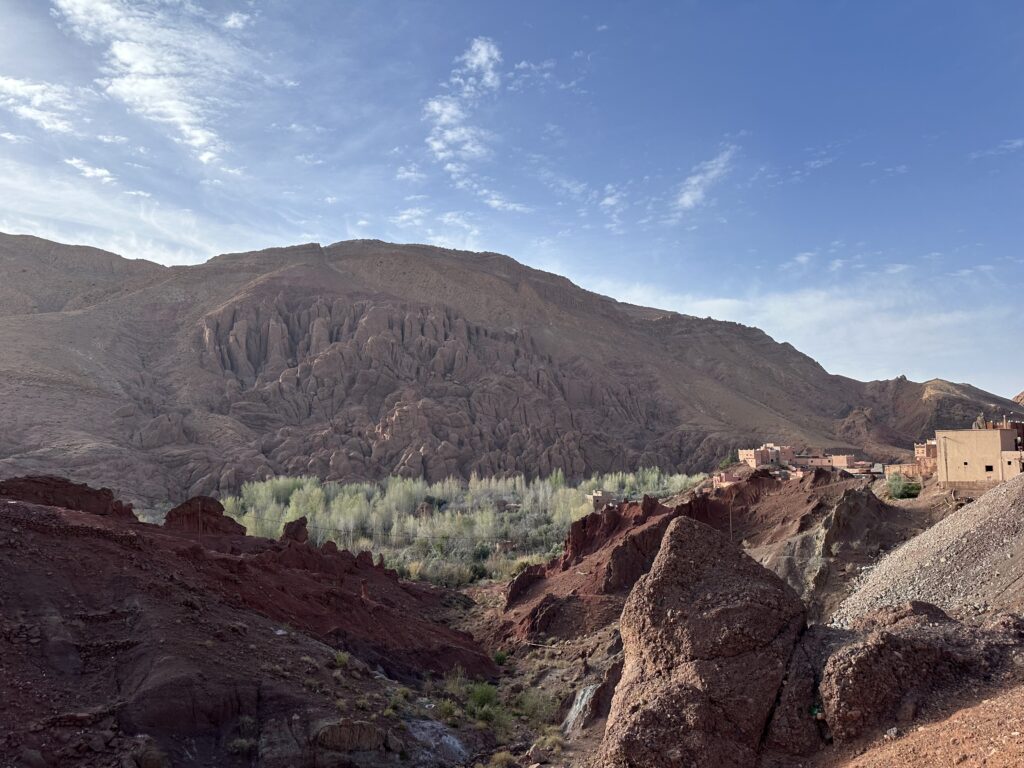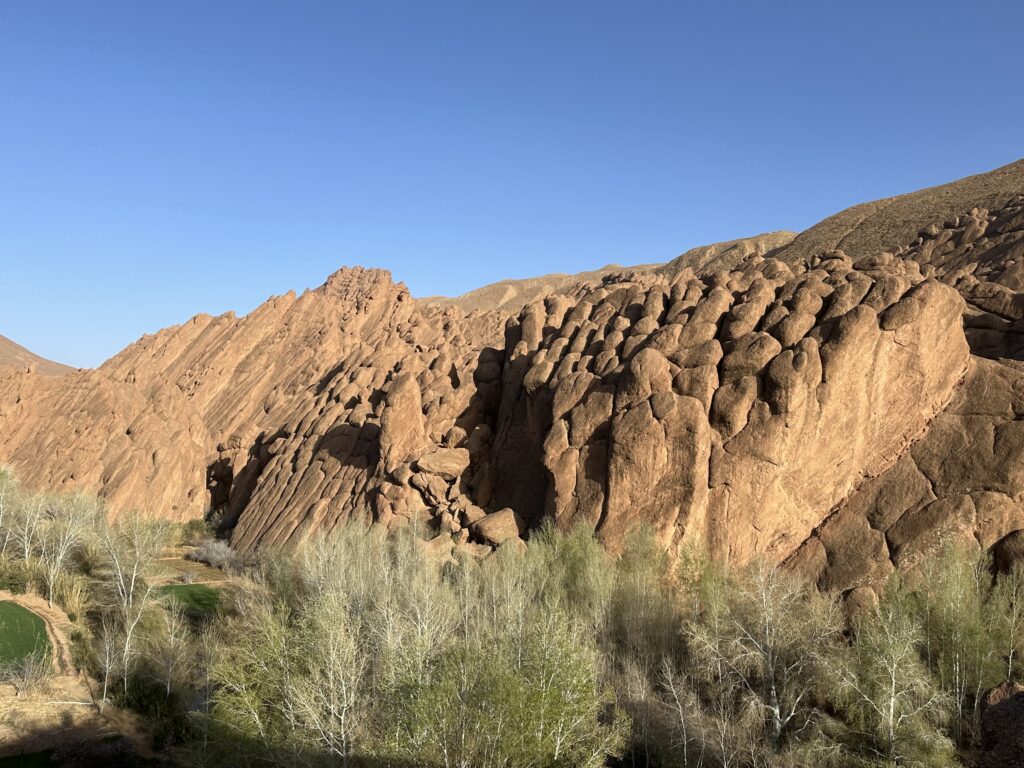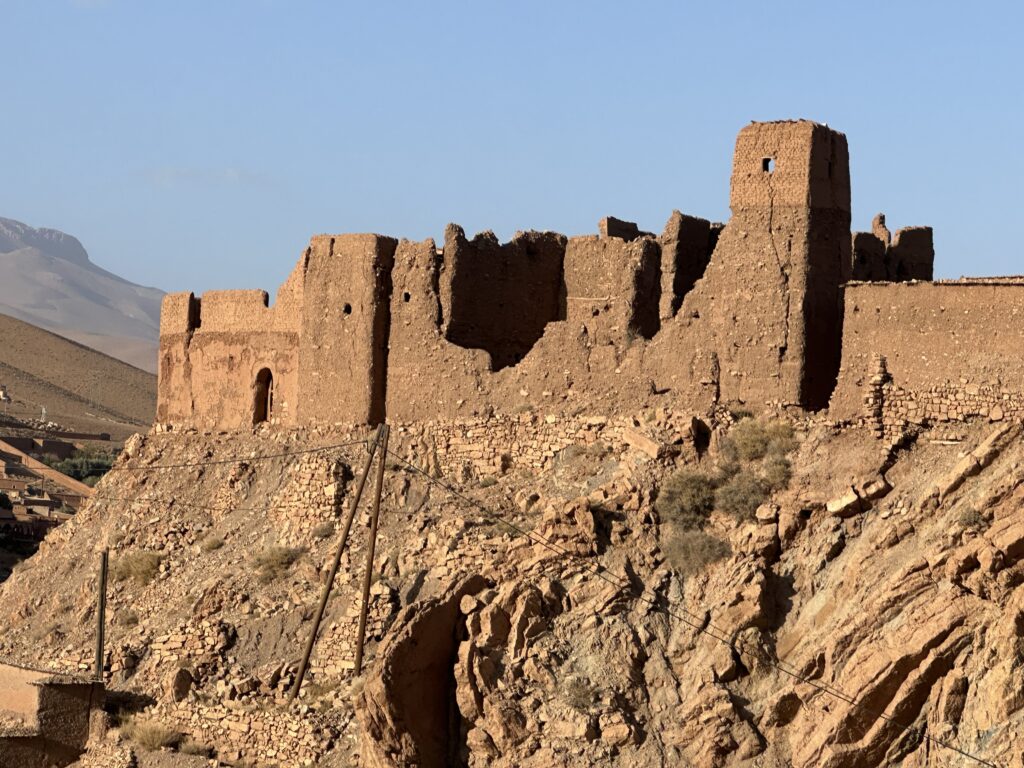Our driver , Khalid, was waiting for us ,with the new Skoda, when we came downstairs at 8:30. Leaving Marrakech, we followed National Route #9, tracing an ancient caravan route from the great Marrakech plains to the gateway to the Sahara desert, climbing from 500m above sea level to 2205m in the High Atlas Mountains. This mountain range, which separates the Sahara desert from the Atlantic, stretches diagonally across Morocco for 1000kms. Featuring more than 100 bends, the route to the pass is known as one of Morocco’s hair-raising drives. Fortunately, we were in good hands. Through the foothills we passed Amazigh villages interspersed with green wheat fields, olive and walnut groves, stopping for coffee at Taddert. As we continued to climb, the landscape became more barren, with patches of snow remaining. Reaching Tizi n’ Tichka, “the pasture pass”, we were rewarded with spectacular views over rugged peaks.
Descending, we arrived at Ait Ben Haddou, an historic ksar (fortified village) and UNESCO World Heritage Site, dating from the 11th C. Its location along one of the main trans-Saharan trade routes gave this earthen clay ksar strategic importance as a trading post, e.g., indigo from what is now Mali was traded for local salt extracted from the river water. (The community had to collect fresh water from a site 10kms away). Crossing the stream on stepping stones, we approached the ksar through an archway which was built for a movie set. Several films were made on location here, including Lawrence of Arabia, Gladiator and, more recently, Game of Thrones. Climbing up through the ksar, we saw evidence of damage to ceilings and walls from the earthquake last September. Considering that the buildings are constructed from mud and hay with bamboo and mud for the roofs, and have been standing for centuries, they have remained remarkably intact. Although most people have left for the new town across the river, some families remain. Khalid asked a woman if we could enter her house and she kindly showed us around and even offered tea. The goats (milk) and sheep (wool) were housed in a room inside the home. The UNESCO citation says that Ait Ben Hadou is a fine example of a southern Morocco ksar which would have housed a family grouping, but also community areas: collective sheep pens and stables, lofts and silos, a market place, meeting room for the assembly of family chiefs, mosque, and madrasas, for example. In contrast a kasba is palace fortress, a seat of local power.
On the outskirts of Ouazazate, an historic gathering place for traders from the high Atlas and the Sahara, we passed the entrances to two large movie studios. This is a successful industry where the background of the desert is required. We did not visit the Cinema museum, but did wander through the 19thC Taouirit Kasbah which was interesting for the designs on the walls and interwoven reed ceilings. It has also been a movie set. Some of the structure was not accessible because of damage from last year’s earthquake. Later on, we were surprised to find ourselves in a region growing roses, the Valley of the Roses. The pink variety of Damask rose grown here dates from the 11thC, apparently brought by an Amazigh trader from Damascus. From April to mid-May, the valley produces around 4000 tonnes of roses, gathered by women by hand and processed for culinary and cosmetic purposes. Driving through, we saw sculptures of roses in the middle of roundabouts and even the taxis are pink!
Next, we entered the area of the Gorges Dadés (1600m). Here, the valley base was lined with groves of olives, argan, date palms, the occasional almond tree and stands of poplar, and, on the hillsides, stood crumbling kasbahs, earthen Amazigh villages and unusual sandstone rock formations. Our hotel for the night, Riad Dades Paradise, served us the best meal that we have had so far in Morocco!

